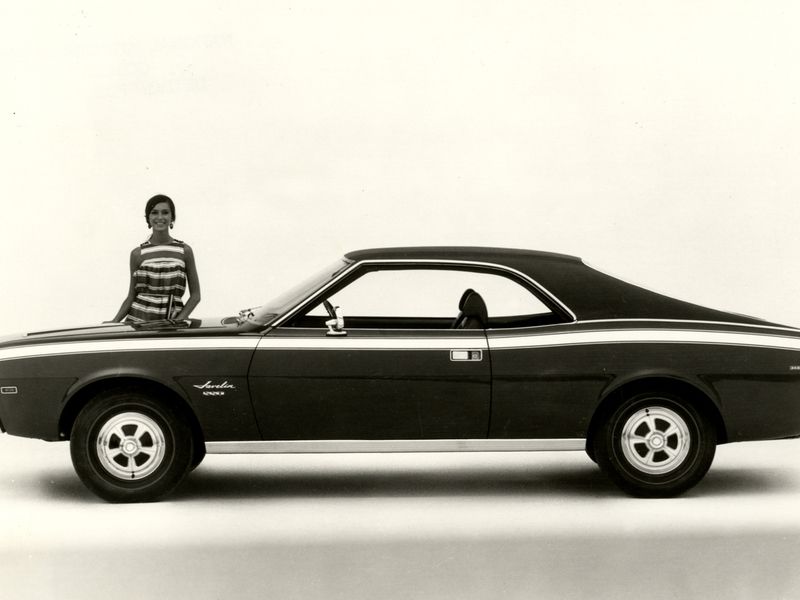
American Motors Corp. announces on Aug. 22, 1967, plans to introduce the 1968 Javelin, joining Detroit’s pony car wars dominated by the Ford Mustang and Chevrolet Camaro.
The Javelin and its short-wheelbase, two-seat offshoot, the AMX, were designed by Richard Teague using underpinnings from AMC’s compact Rambler American car. The vehicle was created to help AMC shed its reputation as a commuter-car maker.
It went on sale Sept. 26, 1967, in standard and SST trims, with a starting price of $2,743 and multiple engine options, ranging from the standard 232 inline-six up to a 280-hp 343 Typhoon V-8. A 390 V-8 that produced 315 hp became available midway through the 1968 model year.
Convertible sales were dropping and AMC lacked financial and engineering resources to design separate fastback and notchback hardtops that were available on the Mustang and Plymouth Barracuda. Instead, Teague and his design team created a single body style with a smooth semi-fastback roofline.
IMG01
While AMC management insisted on features such as sizable trunk and rear-seat room, Teague cleverly endowed the Javelin with what he called the wet T-shirt look: “voluptuous curves with nary a hint of fat.”
The car featured several safety advances such as interior windshield posts that were “the first industry use of fiberglass safety padding,” and flush-mounted paddle-style door handles that later became an enduring AMC safety and styling signature. To comply with federal safety rules, the car was equipped with exterior side marker lights, three-point seat belts and headrests on the front seats, while the interior was devoid of bright trim to help reduce glare.
Javelin output continued through 1974, when the oil crises and stricter emissions and safety regulations upended the industry. AMC also needed the manufacturing capacity to introduce a new small car, the Pacer, which debuted in 1975.

